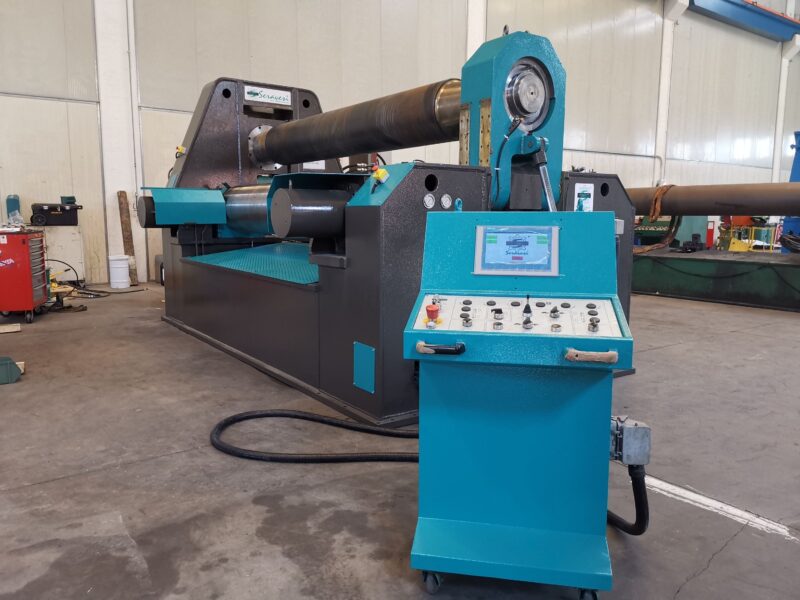In modern manufacturing, maximizing every resource is critical—not only for profitability but also for sustainability. As raw material prices surge and global regulations become more stringent, manufacturers are under constant pressure to reduce waste and boost productivity. The
industrhttps://www.1960seravesi.com/3-rolls-plate-bending-machine.phpial sheet metal bender has emerged as one of the most effective solutions to these challenges. This machine brings together advanced engineering and intelligent automation to minimize material loss and ensure consistent, high-quality output.
- Optimizing Raw Material Use with an Industrial Sheet Metal Bender
- Consistency in Bending with Industrial Sheet Metal Bender Systems
- Industrial Sheet Metal Bender Features That Reduce Waste
- Supporting Sustainability with an Industrial Sheet Metal Bender
- Financial Impact of Industrial Sheet Metal Bender Efficiency
Optimizing Raw Material Use with an Industrial Sheet Metal Bender
Sheet metal fabrication often involves complex shapes and tight tolerances, which traditionally come at the cost of significant material waste. The industrial sheet metal bender addresses this issue head-on by providing unmatched bending precision right from the first operation. Through highly accurate tooling and computer-controlled settings, the machine drastically reduces the trial-and-error process that usually results in material loss.
With its programmable interfaces and ability to process various materials—from carbon steel to aluminum and stainless steel—fabricators can optimize their sheet layouts more efficiently. The precise handling of metal sheets ensures almost all material is transformed into usable components, reducing offcuts and helping shops operate with less scrap volume and lower procurement needs.
Consistency in Bending with Industrial Sheet Metal Bender Systems
Production consistency is a cornerstone of material efficiency. Variability in manual bending or outdated machinery leads to errors that often necessitate rework or full replacement of parts. The industrial sheet metal bender incorporates real-time feedback mechanisms and high-resolution sensors that adapt each bend to the metal’s characteristics and dimensions, ensuring accurate results every time.
This repeatable precision not only reduces material waste but also builds trust in production quality. Customers receive parts that meet specifications on the first delivery, and internal teams spend less time correcting avoidable errors. Over large production runs, even minor gains in consistency can lead to substantial material and labor savings.
Industrial Sheet Metal Bender Features That Reduce Waste
What truly sets the industrial sheet metal bender apart is the thoughtful integration of waste-reducing technologies. Automatic positioning systems, programmable angle calculations, and smart bending sequences are just the beginning. Many models feature integrated simulation software, allowing technicians to visualize and test their programs virtually before executing the first physical bend.
By reducing human error and improving set-up accuracy, these features cut down on common causes of material waste—such as misalignment, incorrect tooling, or inadequate part nesting. Some advanced systems even offer machine learning algorithms that adapt over time, further refining accuracy based on historical production data.
Additionally, automated tool changers help maintain workflow continuity by reducing downtime between projects. With fewer stoppages, fewer misfeeds, and tighter control over bend sequences, material waste is kept to a minimum even under high-speed operations.
Supporting Sustainability with an Industrial Sheet Metal Bender
The environmental impact of manufacturing is now a priority for businesses of all sizes. Using an industrial sheet metal bender is one way to directly address sustainability goals. By reducing scrap rates and energy consumption, these machines contribute to a leaner, greener fabrication process.
Newer models are designed with energy-efficient motors and hydraulic systems that consume only the power necessary for each bend. This smart energy use not only saves on utility costs but also reduces carbon emissions—a significant advantage for companies looking to meet environmental certifications or market themselves as eco-conscious manufacturers.
Moreover, by maximizing the use of raw materials and minimizing production-related waste, companies can reduce the volume of discarded metals needing to be recycled, transported, or landfilled. These operational improvements support broader sustainability objectives without sacrificing productivity or profit.
Financial Impact of Industrial Sheet Metal Bender Efficiency
Efficiency isn’t just about doing more with less—it’s also about enhancing a company’s financial stability. While the initial cost of an industrial sheet metal bender can be substantial, the savings realized through reduced scrap, minimized rework, and lower energy use often result in a strong return on investment. For high-volume facilities, this can translate into thousands of dollars saved each month in material costs alone.
Beyond direct savings, efficient operations increase production capacity without the need to expand floor space or hire additional labor. As turnaround times shrink and accuracy improves, businesses can take on more orders with confidence. Additionally, the reduced waste and sustainability features appeal to modern clients who prioritize environmental responsibility—creating a competitive edge in both domestic and global markets.
The industrial sheet metal bender plays a critical role in reshaping the economics of modern fabrication. It empowers manufacturers to reduce material waste, enhance production quality, and align with sustainability standards—all while driving down operational costs. Through its smart technology and precision performance, this machine is not merely a tool but a strategic asset in a competitive, efficiency-driven industry. As the demand for smarter production grows, the industrial sheet metal bender will continue to lead the way toward more resourceful and resilient manufacturing practices.
